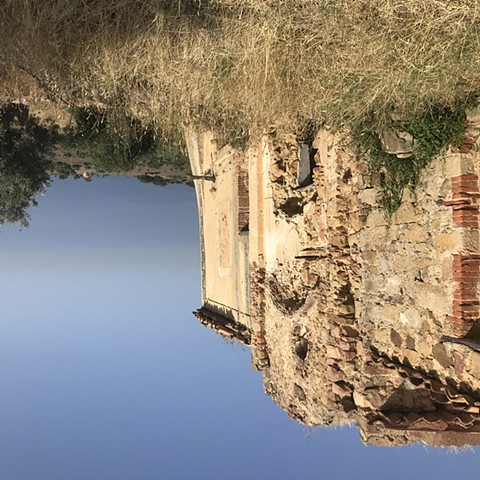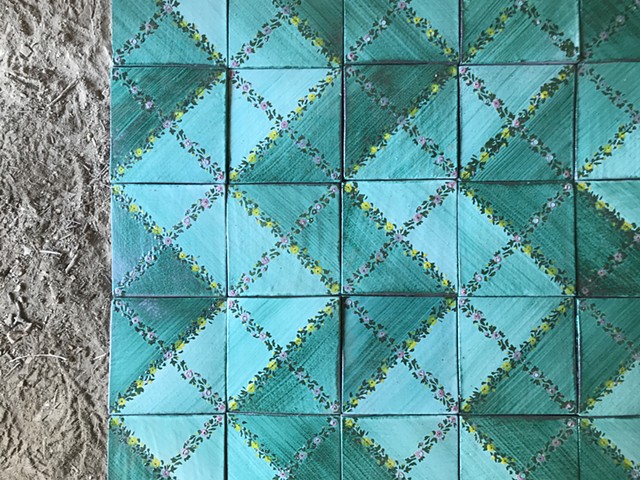Apparizione (2021)
Smarrimento/Apparizione (2020-2021)
Smarrimento is a sequence of photographs documenting the discovery of a child’s dress in the ruins of an abandoned church in the artist's hometown in Sicily, and the narrative she constructs in an effort to imagine how the dress came to be there. The hypothetical narrative the artist constructs around the dress unfolds to reveal many ways that the fabric of her town, emblematic of many others, has been altered in the post-war period through today. Abandonment is a slow, creeping type of violence that forever alters a landscape and its populace. Feeling as if she had stumbled on evidence of a decades-old crime, this finding altered her perspective about the histories and narratives that weave together in this place. The style of the dress denotes its era, consistent with the post-war graffiti and symbols scrawled on the church walls that belie the fascist leanings of its author, who wrote in red chalk, “Vietato non dire parole cattive”. In the years after the war, this deconsecrated church had become a stable for sheep, and a site where the repressed voices of the defeated could now be writ-large. Both childlike and sinister, these scrawled designs adorn the walls that once bore frescoes and stucchi, forever altered by vandals and time. Also depicted is an ocean liner departing presumably for America, as a fleet of fishing boats extend their nets into the sea. We see a figure that seems to be in the water, flailing, or waving to the departing ship. Entering into this ruin of a church felt like opening a time capsule, frozen at the very moment at which the fabric of this village was just beginning to unravel. This is the moment when the countryside began to lie fallow to be overgrown with thorns. Houses and churches were left abandoned with doors and windows agape, like this church where the unthinkable may have happened. Smarrimento can mean several things, including loss and bewilderment. This finding reinforced her perception of subtle signs of surveillance and control and the dark legacy of family honor, intimidation, violence, the post-war tensions and family histories that intertwine her own. The question of who the dress belonged to and how it came to be there will never be answered but led the artist to create a sequence of photographs from the days surrounding that discovery in an effort to set the stage for this ambiguous story. Many of these photographs reflect small acts of transgression, where she entered into spaces that women generally don’t go alone, are off-limits to the public, or places that are abandoned or hidden.
This period of photographic research led to the next component, Apparizione, an illicit, temporary site-specific installation of maiolica tiles hand-painted by the artist at Fratantoni Ceramiche in Santo Stefano di Camastra in 2021. She created a decorative pattern that both re-interprets the floral lattice textile design of the dress shown in the photographic series, and simultaneously adopts the traditional vela tessellating pattern and the verde rame glaze that likely decorated the original tiles, now lost forever. Recalling the dress and its unknown owner, and recalling the maiolica tiles that once covered the floor of the church but have been looted over the years, she underscores the legacy of silence around domestic violence, the Sicilian code of silence omertà, and silent the desecration of historic abandoned sites throughout the depopulating villages of Italy. Alteration is a word that in English is often used in reference to fabric, textiles, tailoring, and architecture. In the context of Smarrimento/Apparizione, alternation takes on a sadder and deeper connotation.
She recently was awarded the Janine Antinori Visual Artist Grant from Atlanta-based Idea Capital, which will help her to realize this ongoing project as a series of prints, large-scale photographic scrims and installations of maiolica tiles to be exhibited in venues in the United States and in Italy, pushing her thematic artistic research into the expanded field of photographs, multiples, textile, and installation.

